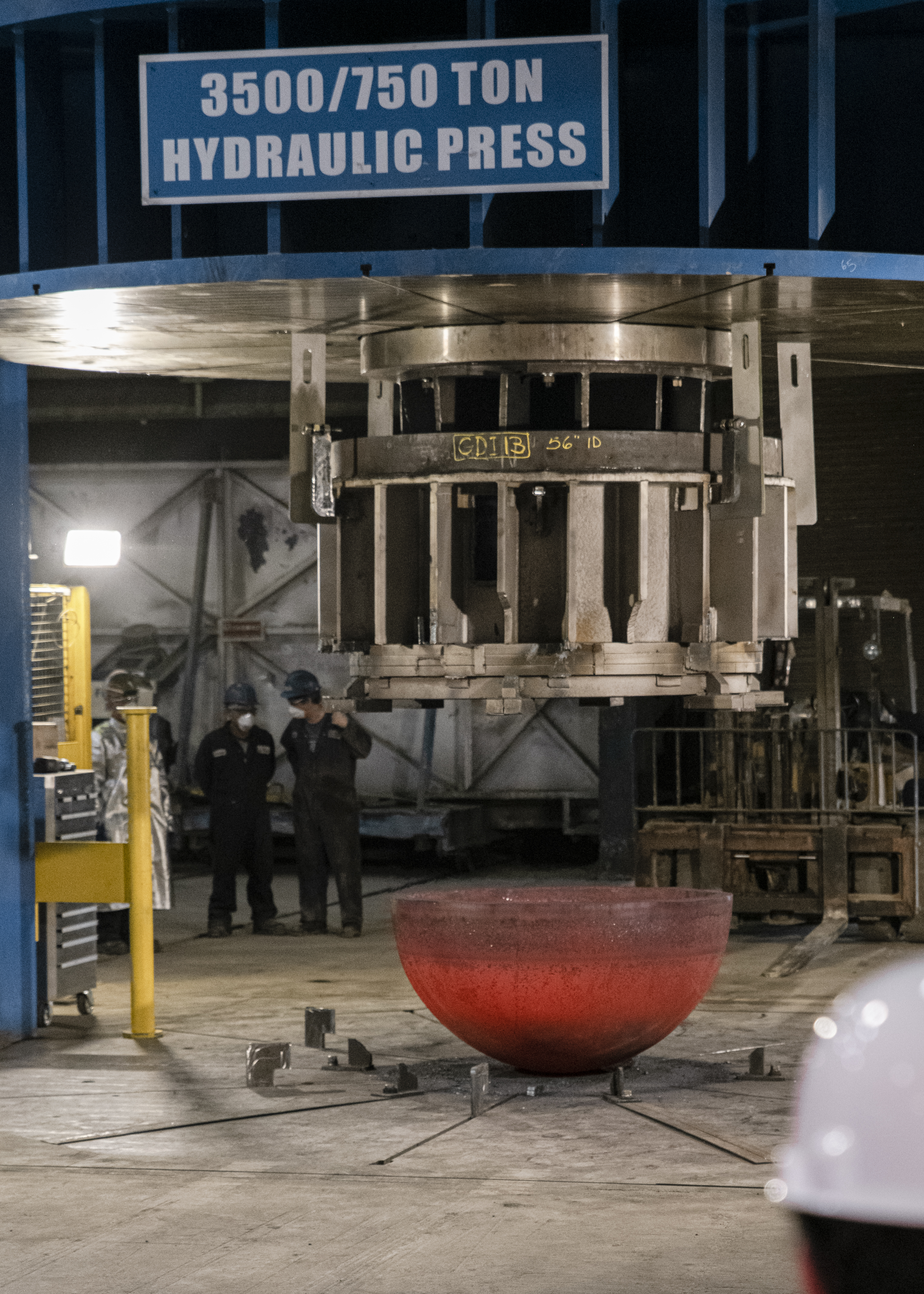
3 reasons metal fabrication is seeing strong demand in Canada
by Emily Newton, Editor-in-Chief, Revolutionized
The Canadian metal fabrication market is in a period of strong growth that’s likely to continue due to a variety of factors.

A new tank head is made using Conrex Steel’s new 3500-ton head press. (Photo Credit Corinne Moco of Olive Rae Photography)
The Canadian metal fabrication market is in a period of strong growth that’s likely to continue. But what are the specific reasons for that success? Here is a closer look at three reasons why metal fabrication may be seeing such strong demand.
1. The Construction Boom
Canada is like many other global markets in that it has bounced back in a big way following the relative downturn caused by factors including the COVID-19 pandemic. However, one issue dampening the comeback is a shortage of skilled workers.
As companies need help to hire fast enough, many of them bring inexperienced workers on board. That could mean the work gets done more slowly or there are more quality control issues to deal with later.
However, the metal fabrication sector certainly benefits from this surge in demand. Many companies are experimenting with using new materials, such as bamboo. Even as that trend gathers momentum, people will still need fabricated metal for various construction projects.
2. The Rise of 3D Printing
Many metal fabrication shops that got started with traditional methods have branched into 3D printing. That change has caused some notable process changes. Metal fabricators frequently make their projects more durable by using powder-coated metal. They can even put powder coating on plastic to get the same effect.
However, as people experiment with using 3D printing in metal fabrication, they use powder in a way other than to provide a protective layer. More specifically, they use metal in powder formats for 3D printing applications.
Innovations like these likely won’t replace conventional methods. But, as fabrication shop managers strive to stay competitive in the marketplace, more will gradually update their approaches with options like additive and 3D printed metal.
3. Healthy Domestic Activity
The Canadian metal fabrication market benefits from significant internal activity, but it also has a substantial reliance on exporting. The Canadian Occupational Projection System released an industrial summary of the fabricated metal products and machinery markets to show this.
It found that, overall, 60% of the items made in that market ship to other places. However, 71% of the metal fabrication output gets made for use within Canada.
Elsewhere, a 2016–2026 Mordor Intelligence report about the Canadian metalworking industry brought more clarity to the domestic activity trend. It noted how sectors like hunting, agriculture, forestry and Industry 4.0 have ramped up the demand for products made by metalworkers.
However, November 2022 numbers from Job Bank showed less than 100 jobs for sheet metal workers in Canada. The job market analysis also indicated significant fluctuations in demand depending on the province. Although that figure only represents one kind of metalworking, it suggests certain areas may struggle with labour shortages similar to how the country’s construction market has.
Metal Fabrication Matters
These three trends show the Canadian metal fabrication market seems likely to continue succeeding, even as new technologies emerge. Manufacturers in this industry should continue tracking trends and consider how these patterns could affect their work and organizations.